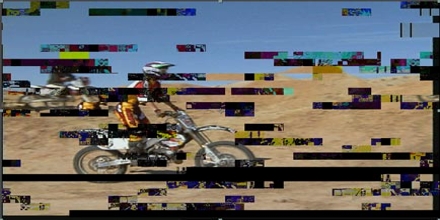

8(1), 28–35 (2004)īhattacharyya, S., Biswas, A., Mukherjee, J., Majumdar, A.K., Majumdar, B., Mukherjee, S., Singh, A.K.: Detection of artifacts from high energy bursts in neonatal EEG. Schetinin, V., Schult, J.: The combined technique for detection of artifacts in clinical electroencephalograms of sleeping newborns. Hu, J., Wang, C.S., Wu, M., Du, Y.X., He, Y., She, J.: Removal of EOG and EMG artifacts from EEG using combination of functional link neural network and adaptive neural fuzzy inference system. Psychophysiology 48(2), 229–240 (2011)īurger, C., van den Heever, D.J.: Removal of EOG artefacts by combining wavelet neural network and independent component analysis. Mognon, A., Jovicich, J., Bruzzone, L., Buiatti, M.: ADJUST: an automatic EEG artifact detector based on the joint use of spatial and temporal features. Jafarifarmand, A., Badamchizadeh, M.A.: Artifacts removal in EEG signal using a new neural network enhanced adaptive filter. O’Regan, S., Faul, S., Marnane, W.: Automatic detection of EEG artefacts arising from head movements using EEG and gyroscope signals. Keshtkaran, M.R., Yang, Z.: A fast, robust algorithm for power line interference cancellation in neural recording. 437–442 (2012)ĭelorme, Arnaud, Makeig, Scott: EEGLAB: an open source toolbox for.

In: 5th International Conference on BioMedical Engineering and Informatics. Islam, M.K., Tuan, N.A., Zhou, Y., Yang, Z.: Analysis and processing of in-vivo neural signal for artifact detection and removal. Shahrokhi, Farzaneh, Abdelhalim, Karim, Serletis, Demitre, Carlen, Peter L., Genov, Roman: The 128-channel fully differential digital integrated neural recording and stimulation interface. Holmes, G.L., Jones, H.R., Moshé, S.L.: Clinical Neurophysiology of Infancy, Childhood, and Adolescence. Thesis, National University of Ireland Maynooth (2013)Ĭhang, B.S.: Atlas of Ambulatory EEG. Sweeney, K.: Motion artifact processing techniques for physiological signals. Islam, M.K., Rastegarnia, A., Nguyen, A.T., Yang, Z.: Artifact characterization and removal for in vivo neural recording. Islam, M.K., Rastegarnia, A., Yang, Z.: Methods for artifact detection and removal from scalp EEG: a review. In: 4th International Conference on Data Processing and Robotics (ICDPR 2020). Kabir, A.U., Bin Shahin, F., Islam, M.K.: Design and implementation of an EOG-based mouse cursor control for application in human-computer interaction. Salerno, D.M., Zanetti, J.M., Poliac, L.C., Crow, R.S., Hannan, P.J., Wang, K., Goldenberg, I.F., Tassel, R.A.V.: Exercise seismocardiography for detection of coronary artery disease. It is also shown that availability of some a priori clinical or statistical information can boost the algorithm performance in many cases. Therefore, in the final part of this chapter, both quantitative and qualitative measures are demonstrated in tables and the algorithms are assessed in terms of their computational complexity and cost. In the case of tensor domain systems, more care has to be taken to comply with real time applications. Since most biosignals are recorded in low sampling rate, the noise removal algorithms can be often applied in real time. In addition, the impact of artifact and noise removal is examined for BCI and clinical diagnostic applications. The analysis of the biosignal recordings in time, frequency and tensor domains is of major interest. The purpose of this chapter is to introduce different sources of artifacts and noises present in biosignal recordings, such as EEG, ECG, and EMG, describe how the artifact characteristics are different from signal-of-interest, and systematically analyze the state-of-the-art signal processing techniques for reliable identification of these offending artifacts and finally removing them from the raw recordings without distorting the signal-of-interest. There have been many signal processing-based algorithms proposed in the literature for reliable identification and removal of such artifacts from the biosignal recordings. Brain-Computer Interfaces (BCIs) and neural prostheses are among the popular ones. This eventually results either in a wrong diagnosis of the diseases or misleading the feedback associated with such biosignal-based systems. The presence of such artifacts and noises poses a great challenge in proper analysis of the recorded signals and thus useful information extraction or classification in the subsequent stages becomes erroneous. Biosignals have quite low signal-to-noise ratio and are often corrupted by different types of artifacts and noises originated from both external and internal sources.


 0 kommentar(er)
0 kommentar(er)
